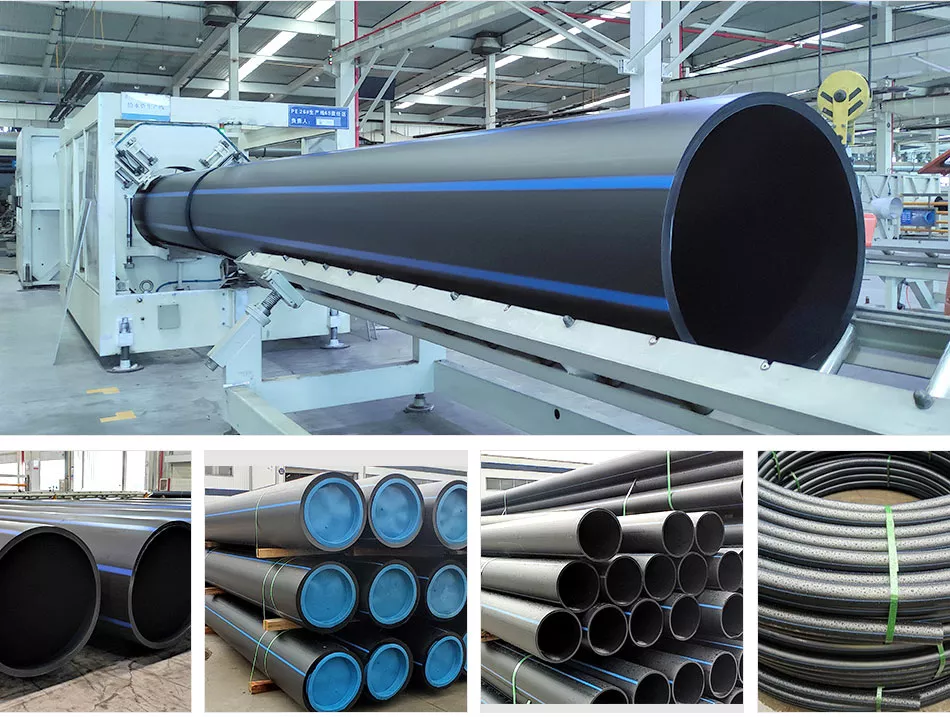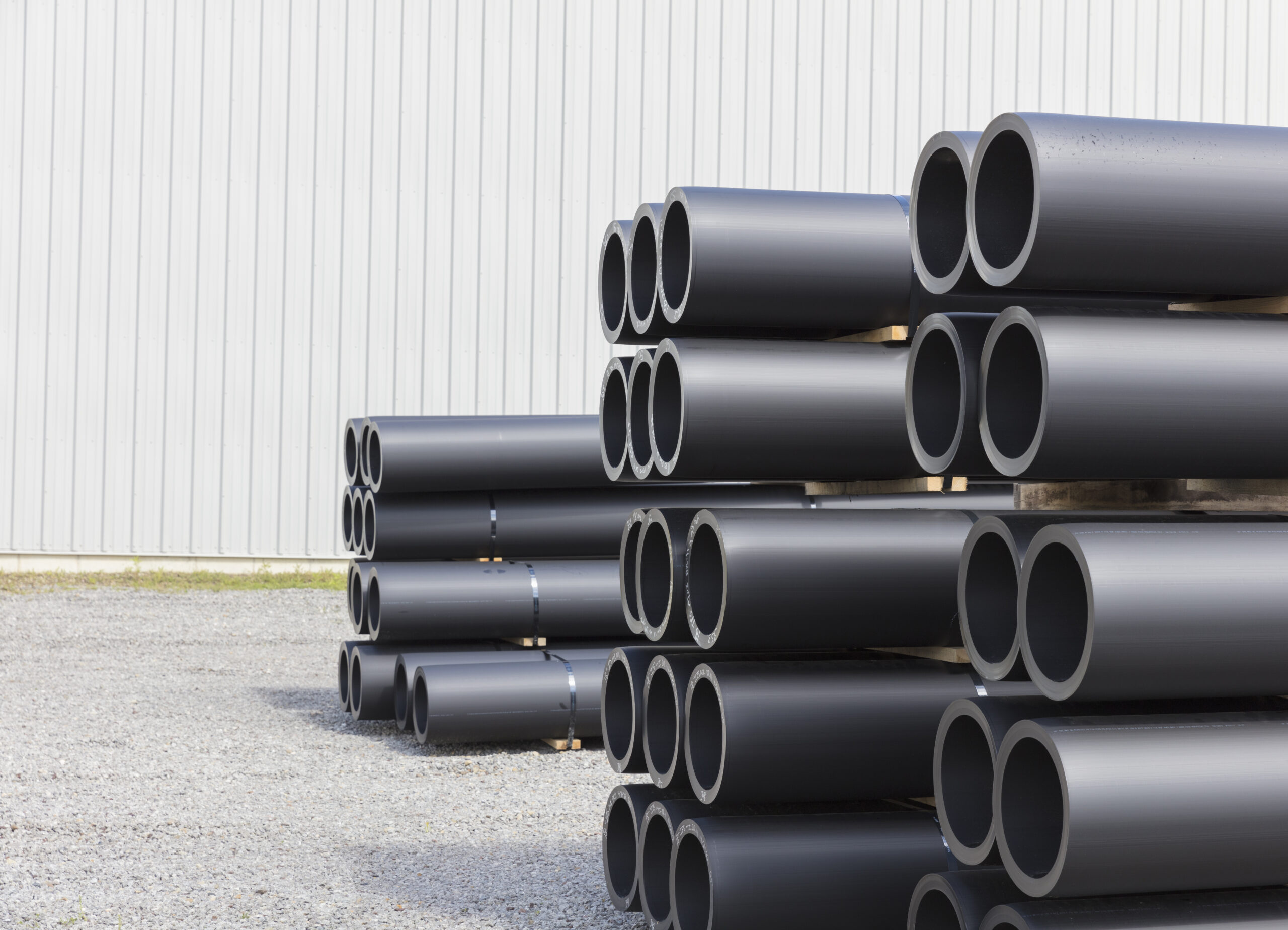How American Plastics HDPE Pipe Manufacturing Maintains Sustainability
Wiki Article
Discover the Production Refine Behind High-Quality HDPE Pipeline and Its Applications
The manufacturing process of high-grade HDPE pipelines is intricate and systematic. It starts with the choice of basic materials that enhance efficiency. Following this, ethylene goes through polymerization to create resin, which is then shaped with extrusion. Quality control is critical, guaranteeing that the end product fulfills rigorous requirements. However, the journey of HDPE pipes doesn't finish with production. Their applications across numerous markets reveal a broader value worth analyzing.Understanding HDPE: Residences and Advantages

High-density polyethylene (HDPE) is a functional thermoplastic known for its durability and resistance to numerous environmental variables. This material shows superb tensile stamina, making it ideal for demanding applications. Its low-density structure adds to a lightweight item, assisting in ease of dealing with and setup. HDPE likewise showcases amazing resistance to chemicals, which reduces destruction when exposed to rough substances.
The material's low wetness absorption better enhances its longevity, making it suitable for use in pipelines and tank. Additionally, HDPE is immune to ultraviolet (UV) radiation, making certain that items maintain their integrity also when revealed to sunshine. Its adaptability permits for the development of elaborate shapes without compromising strength. The environmentally friendly nature of HDPE, commonly stemmed from recycled materials, contributes to its appeal, advertising lasting methods in manufacturing. Generally, these residential or commercial properties and advantages make HDPE a recommended selection for numerous industrial and consumer applications.
Raw Material Choice for HDPE Manufacturing
The selection of resources for HDPE production is important to confirm the end product meets the wanted specs and quality requirements. High-density polyethylene (HDPE) is primarily generated from polymerized ethylene, acquired from nonrenewable fuel sources such as gas or petroleum. The quality of these feedstocks significantly affects the mechanical and thermal properties of the last HDPE.Additives likewise play a significant role in enhancing HDPE's performance, consisting of antioxidants, UV stabilizers, and colorants, which boost resilience and resistance to environmental factors. The choice process must take into consideration not just the chemical structure of the raw products however additionally their handling characteristics to guarantee effective production.
Additionally, the sourcing of basic materials must prioritize sustainability and compliance with environmental policies, as responsible practices are vital in today's market. Eventually, mindful basic material choice lays the foundation for generating top quality HDPE pipelines appropriate for diverse applications.
The Extrusion Process: Forming HDPE Pipe
The extrusion procedure plays a vital role fit HDPE pipes, beginning with precise material prep work methods that ensure optimal flow and consistency. Just as important is the design of the die, which straight affects the final dimensions and surface quality of the pipeline. Together, these aspects contribute considerably to the effectiveness and quality of HDPE pipeline production.Material Prep Work Methods
Effective manufacturing of HDPE pipelines starts with precise material preparation techniques, particularly the extrusion process. During this stage, high-density polyethylene resin is initial dried out to remove dampness, making certain optimal flow qualities. The resin is after that fed into the extruder, where it undergoes home heating and melting, changing into a thick state. This heating process is meticulously regulated to preserve the product's stability and performance. The molten HDPE is forced via a die, shaping it into a constant pipeline form. Proper temperature administration during extrusion is essential, as it directly affects the product's residential properties and the end product top quality. When shaped, the HDPE pipeline is cooled and cut to specified sizes, prepared for subsequent processing and applications.Die Layout Relevance
Accuracy in die style plays a crucial duty in the extrusion process of HDPE pipes. The die functions as the final shaping tool, directly affecting the pipe's measurements, wall surface density, and surface area coating. A well-designed die warranties uniform product circulation, minimizing defects such as irregularities and vulnerable points. The geometry of the die must be enhanced to suit the particular homes of HDPE, including its thickness and thermal habits throughout extrusion. In addition, the cooling rate of the product as it travels through the die can noticeably influence the pipe's structural stability. Investing in sophisticated die modern technology is essential for manufacturers aiming to create top notch HDPE pipelines that fulfill industry requirements and client expectations.High Quality Control Procedures in HDPE Production
Although various elements affect the top quality of HDPE pipe manufacturing, reliable quality assurance steps are critical to assure uniformity and dependability in the last product. Trick top quality control methods include extensive product examination, validating that the raw polyethylene fulfills recognized standards for purity and density. During the extrusion process, criteria such as temperature level, pressure, and cooling time are carefully kept an eye on to maintain dimensional accuracy and structural honestyOn top of that, post-production screening is vital; makers usually perform hydrostatic examinations to analyze the pipeline's stamina and resistance to pressure. Visual inspections for surface area defects additionally enhance top quality guarantee. Qualification from relevant criteria companies, like ASTM or ISO, offers an added layer of integrity. By executing these comprehensive quality assurance steps, manufacturers can lessen defects, enhance efficiency, and ensure that the HDPE pipes fulfill the particular needs of different applications, inevitably causing customer contentment and rely on the item.
Applications of HDPE Pipe Throughout Industries
HDPE pipelines are utilized across various fields as a result of their resilience and flexibility. In water distribution systems, they guarantee efficient delivery, while in wastewater management, they provide reliable solutions for waste transportation. In addition, farming irrigation networks gain from HDPE's resistance to rust and versatility, making it an optimal choice for modern farming techniques.
Water Circulation Systems
A significant variety of industries depend on high-density polyethylene (HDPE) pipes for efficient water distribution systems. Recognized for their sturdiness and resistance to corrosion, HDPE pipelines are commonly made use of in municipal water system networks, agricultural irrigation, and commercial applications. Their lightweight nature facilitates simple handling and setup, decreasing labor expenses and time. Furthermore, HDPE pipes can suit numerous stress levels, making them suitable for both reduced and high-pressure systems. custom hdpe pipe manufacturing Midland TX. The versatility of the material allows for smooth assimilation into existing facilities, reducing the need for extensive excavation. Furthermore, HDPE's resistance to chemical seeping guarantees that the water supplied stays safe and clean, making it an optimal choice for keeping the high quality of potable water throughout various fieldsWastewater Management Solutions
Effective water circulation systems likewise lead the way for ingenious wastewater monitoring services, where high-density polyethylene (HDPE) pipes play a substantial duty. Popular for their durability and resistance to corrosion, HDPE pipes are perfect for transferring wastewater in various settings. Their adaptability enables for very easy setup in complicated atmospheres, minimizing the demand for extensive excavation. In addition, HDPE's smooth indoor surface reduces rubbing, improving flow prices and effectiveness. These pipes are additionally immune to chemical leaching, making sure that pollutants do not jeopardize the surrounding setting. Industries, municipalities, and treatment centers progressively rely upon HDPE pipelines for their reliability and durability, making them a recommended choice for modern wastewater administration systems. This flexibility emphasizes the crucial value of HDPE pipelines throughout many applications.Agricultural Irrigation Networks
Agricultural watering networks profit significantly from making use of high-density polyethylene (HDPE) pipelines, which offer reliable and trustworthy water delivery to crops. HDPE pipelines are light-weight, making them simple to transfer and mount, while their adaptability enables various configurations in varied terrains. These pipes show excellent resistance to rust, chemicals, and UV radiation, making certain sturdiness in rough farming atmospheres. Furthermore, their smooth interior surface area decreases rubbing loss, optimizing water flow and decreasing energy prices linked with pumping. The long life of HDPE pipelines, commonly going beyond 50 years, adds to lower upkeep and replacement expenditures. Farmers significantly count on HDPE pipes to boost irrigation effectiveness and promote sustainable farming techniques, eventually leading to boosted plant yields and resource preservation.
Future Patterns in HDPE Pipe Innovation
As the demand for lasting and effective facilities grows, innovations in HDPE pipe modern technology are poised to transform various sectors. Emerging trends include the combination of wise modern technologies, such as sensing units and IoT abilities, which promote real-time monitoring of pipeline problems, lowering upkeep prices and avoiding leakages. Texas hdpe pipe manufacturer In addition, the development of sophisticated manufacturing methods, such as 3D printing, is enabling the production of complicated, tailored pipe layouts that deal with certain task demands.The emphasis on recycling and round economic climate methods is driving the technology of HDPE pipelines made from recycled materials, enhancing sustainability. Improved jointing techniques, such as electro-fusion and mechanical fittings, are likewise boosting installment effectiveness and reliability. The expanding emphasis on ecological guidelines is pressing makers to embrace greener manufacturing processes, ensuring that HDPE pipelines not just satisfy sector standards but additionally cultivate a more lasting future for facilities growth.
Regularly Asked Questions
Just How Does HDPE Contrast to Other Plastic Products?
HDPE outshines numerous various other plastic products regarding sturdiness, chemical resistance, and adaptability. Its low density and high tensile toughness make it optimal for numerous applications, commonly surpassing choices in both performance and longevity.What Are the Ecological Effects of HDPE Manufacturing?
The ecological impacts of HDPE production include greenhouse gas discharges, energy consumption, and prospective contamination from making procedures. Furthermore, incorrect disposal can result in soil and water contamination, increasing worries concerning long-lasting ecological impacts.Can HDPE Pipes Be Recycled?
Yes, HDPE pipes can be recycled. Several facilities accept used HDPE for handling, changing it into brand-new products. This reusing adds to sustainability efforts, minimizing plastic waste while saving sources and power in the manufacturing cycle.What Is the Life-span of HDPE Pipeline?

Just How Do Temperature Level Variants Affect HDPE Pipe Performance?
Temperature level variations considerably affect HDPE pipe efficiency, impacting flexibility and strength. Heats can bring about softening, while reduced temperatures may cause brittleness, ultimately affecting the pipeline's durability and viability for different applications in diverse environments.Report this wiki page